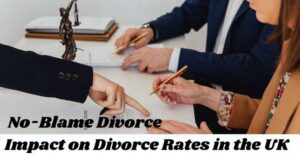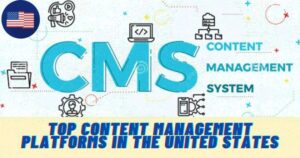Unemployment in India has always been high, but it’s expected to increase in the coming years. In fact, the Organization for Economic Cooperation and Development (OECD) predicted that India’s unemployment rate will double from 4 percent to 8 percent by 2024, even if the country’s economy continues to grow at a healthy rate.
A new report from the Indian government predicts that the unemployment rate in India will reach 8.3% by 2024, which is an increase from the 6% unemployment rate in 2017. The report predicts that 10 million more people will join the ranks of the unemployed over the next four years, which will bring the total number of unemployed people to 220 million by 2024. The government also predicts that there will be 1 million more job openings over this same time period, though it projects that jobs created will not be enough to offset the overall growth in population.
According to a private agency named CMIE, or Centre for Monitoring Indian Economy, India’s unemployment rate in 2024 is 7.70%. In Urban India, it is 8.60% whereas in Rural India it is 7.30%. CMIE publishes the daily and monthly unemployment rate of India.
Current Scenario of Unemployment in India
Unemployment is a problem that every country faces. One of such countries is India. With its complex population and an evolving job market, unemployment among Indians has become an important concern for both policymakers and people. Understanding more about unemployment in India can help them implement proper measures to make sure everyone who’s looking for work finds a job they are qualified for. In general, unemployment in India is expected to grow by 3% between 2017 and 2024.
Unemployment Rate in India during 2017-2024
The unemployment rate was 5% as of 2017, according to data from Trading Economics. This means that 5 out of 100 people were unemployed at some point during 2017. In comparison, unemployment rates were 4% for all of 2016 and 4.9% for 2015. Unemployment rates have been relatively stable over time—there was only a 0.1 percentage point difference between 2016 and 2015.
According to the National Statistical Office (NSO) report published in May 2022, the unemployment rate in Urban India fell to 8.7% in October-December 2021, down from 10.3% the previous quarter.

Causes of Unemployment in India 2024
There are multiple factors that lead to unemployment in any country. Unemployment can be temporary or permanent, depending on whether it is caused by a reduction of force or by a lack of jobs.
There are four types of unemployment that are mainly responsible for causing unemployment in India. These are seasonal unemployment, cyclical unemployment, frictional unemployment and structural unemployment. We can tackle seasonal and cyclical unemployment by increasing public expenditure during bad times through expansionary monetary policy.
Government can provide temporary work to unemployed people under the food for work program, or even set up a public employment program that creates full-time employment at minimum wage levels to create job security. This will reduce trend towards structural changes or there is no need to lay off workers because of lack of market demand thus bringing stability to market forces thus reducing cyclical type of unemployment.
Lack of Jobs: One of the primary causes of unemployment is a lack of jobs. Even if jobs are available, however, they may be unattractive or poorly paid.
Unemployment Rate in India State wise 2024
According to current CMIE figures published in 2024, among the Indian states, it was estimated that the Unemployment Rate is very high in Haryana, with 29.4% followed by Rajasthan (28.3%) and Rajasthan (28.3%). This is worrisome since high level of unemployment adversely affects livelihood security of workers and their families as they have no means of subsistence other than salary/wage earned through employment.
The Unemployment Rate is found to be low in Chhattisgarh, with 0.8% followed by Madhya Pradesh (2%) and Odisha (2.1%).
Below is the Unemployment Rate in India State wise 2024 Table
| States | 2024 |
|---|---|
| Andhra Pradesh | 6.6 |
| Assam | 8.6 |
| Bihar | 12.3 |
| Chhattisgarh | 0.8 |
| Delhi | 8.6 |
| Goa | 11.1 |
| Gujarat | 2.5 |
| Haryana | 29.4 |
| Himachal Pradesh | 13.9 |
| Jammu & Kashmir | 17.1 |
| Jharkhand | 16.8 |
| Karnataka | 2.5 |
| Kerala | 5.6 |
| Madhya Pradesh | 2 |
| Maharashtra | 5.6 |
| Meghalaya | 4.1 |
| Odisha | 2.1 |
| Puducherry | 2.2 |
| Punjab | 8.2 |
| Rajasthan | 28.3 |
| Sikkim | 21 |
| Tamil Nadu | 3 |
| Telangana | 5.8 |
| Tripura | 11.7 |
| Uttar Pradesh | 4 |
| Uttarakhand | 2.3 |
| West Bengal | 4.4 |
| India | 7.5 |
Government Efforts to curb Unemployment in India
The government of India, especially at local levels, is actively involved in addressing problems related to unemployment. This has meant, first and foremost, ensuring a minimum standard of living for all Indians through its unique employment guarantee scheme—the Mahatma Gandhi National Rural Employment Guarantee Act (MGNREGA). As of March 2023, data from the rural development ministry’s website revealed that 253.8 million people were employed under the MGNREGA in 2021-22.
Additionally, various state governments have tried innovative approaches like self-help groups and compulsory microcredit programs. While these initiatives may not adequately address unemployment issues, they show an awareness of root causes and willingness to experiment with solutions. However, it’s unclear whether such measures are enough to help mitigate unemployment by 2024. There are some who argue that only large scale industrialization can create enough jobs for India’s growing population, but others say that policies should focus on creating better educational opportunities instead.
Challenges to Employment Generation in India
Unemployment is a growing problem in India as its economy struggles to create jobs for youth and young adults entering a rapidly-evolving workforce. The problem, which is not new, stems from several factors related to both supply and demand. Lured by steady salaries and better job prospects, millions of Indians have moved away from agriculture into cities over recent decades—which has helped to drive high economic growth.
However, in doing so, they’ve left millions of smallholder farms without enough manpower to harvest crops at a time when food production is already struggling due to complex challenges like climate change. That means more young people are stuck either moving back into rural areas (if possible) or seeking work elsewhere; neither option is ideal.
How Industry Shapes The Future Of Employment In India?
The Indian economy has been one of great promise. Its growth has always attracted western countries looking to expand their economic footprint. Growth comes with job creation, which is something that India sorely needs considering unemployment rate in India. As jobs are created, unemployment drops and more people join the workforce. This leads to more goods and services being produced, thus more demand for goods and services can be met.
Some industries make employment generation inevitable. Take logistics for example; it is an indispensable part of supply chain management. Every company requires logistics support to ensure smooth flow of production and services they provide through effective distribution channels.
How can we Stop Unemployment in India?
There are many reasons for unemployment in India. A few of them include lack of job opportunities, population increase and low skill levels. First, as a country, we are unable to create enough jobs that are keeping pace with our growing population. In addition, over 2 million people enter the job market every year looking for employment, but there aren’t enough job opportunities available due to several reasons such as unwillingness of companies to hire on a large scale and automation taking over some jobs. If these issues are not resolved soon, then the unemployment rate will increase dramatically by 2024.
What should be done? To tackle rising unemployment problems sustainably, we need to address root causes instead of simply increasing government expenditure on mass employment schemes. This can be achieved through various measures including improving education system, providing tax incentives to employers who provide more jobs, encouraging women participation in workforce etc. Moreover, while it might sound counter-intuitive at first glance, but one way out could also be reducing population growth rates by promoting family planning programs across states. This would help reduce pressure on the economy and create more job opportunities for millions of youth entering the workforce every year. These are just some ways out which can help curb unemployment problem in India going forward.
Why is Unemployment so High in India?
There are many reasons why unemployment is so high in India. Let’s examine the reasons behind it. Unemployment refers to people who are seeking employment but are unable to find a job. When such individuals aren’t able to find jobs, they typically collect unemployment benefits from government programs. So unemployment can be understood as a combination of two things—unemployed people and unemployed individuals (people who have lost their jobs). The unemployment rate measures both of these aspects by dividing the number of unemployed individuals by all employed and unemployed individuals.
Other major reason for unemployment in India is lack of education and employable skills among Indians. With more than 500 universities and close to 7 lakh colleges spread across the country, one would expect that literacy levels among Indians will be higher. However, many of them lack basic reading skills. There remains a huge challenge ahead to provide sufficient jobs for millions who graduate from institutes every year. Another factor contributing towards growing levels of unemployment in India is its population structure.
(Source: CMIE, NSO Report)
READ: Poverty in India Statistics
Disclaimer: The data research report we present here is based on information found from various sources on the internet. We are not liable for any financial loss, errors, or damages of any kind that may result from the use of the information herein. We acknowledge that though we try to report accurately, we cannot verify the absolute facts of everything that has been represented.








